Fabric Acoustic Panels
Showing all 6 results
-
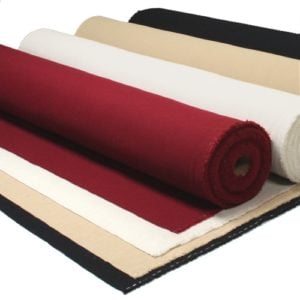
Nankarrow GeoWeave™ ‘Breathe Fire Rated Acoustic Fabric for Walls, Ceilings, & Panels
₹330.00 – ₹520.00 incl GST Running Metre (R. Mtr) Select options -
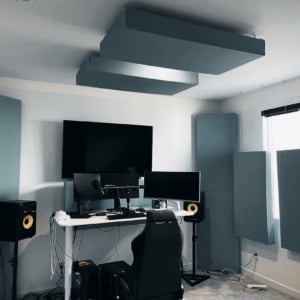
Aural Exchange ProPanel Custom-Built Acoustic Panels
₹660.00 incl GST Select options -
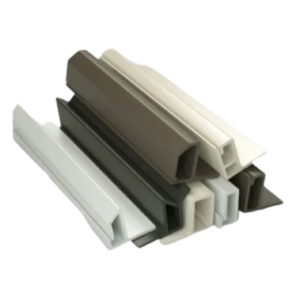
Nankarrow Klasp Acoustic Fabric Gripper Stretch Track – Set of 50
₹8,400.00 – ₹9,800.00 incl GST Select options -
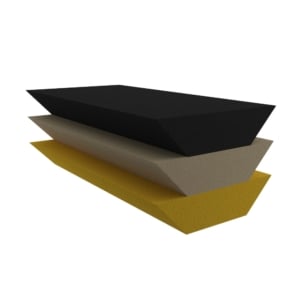
Aural Exchange ProPanel-B Custom-Built Corner Bass Traps
₹1,980.00 incl GST Select options -

Echoseal Hexagon Premium Acoustic Felt Panel – Set of 6
₹2,310.00 incl GST Select options -
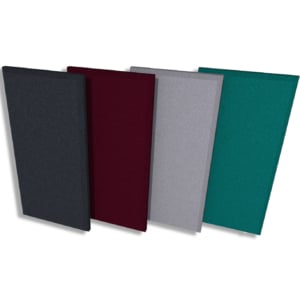
Nankarrow Resorb Luxury Felt Fabric Acoustic Panel – Set of 4
₹7,040.00 incl GST Select options
Fabric acoustic panels are sound-absorbing panels designed to improve the acoustic characteristics of a space by reducing echoes, reverberation, and background noise. These panels typically consist of a rigid frame covered with a fabric or textile material. The frame is filled with sound-absorbing materials, such as rockwool, geowool, fiberglass, polywol or aocustic foam, to effectively absorb sound waves.
The primary purpose of fabric acoustic panels is to address acoustic issues in various environments, including homes, offices, recording studios, auditoriums, theaters, and commercial spaces. They are particularly useful in spaces with hard surfaces that tend to reflect sound, leading to poor acoustics and reduced speech intelligibility.
Key features of fabric acoustic panels include:
- Sound Absorption: The panels are designed to absorb and dissipate sound waves, preventing them from bouncing off walls and creating echoes.
- Aesthetic Appeal: The fabric covering provides a visually appealing finish, and these panels come in a variety of colors and patterns to suit different design preferences.
- Versatility: Fabric acoustic panels are versatile and can be installed on walls or ceilings, depending on the specific requirements of the space.
- Customization: Some panels allow for customization in terms of size, shape, and fabric options, allowing users to tailor them to their specific needs.
- Easy Installation: Many fabric acoustic panels are designed for easy installation, often using simple mounting systems or adhesive.
- Improved Speech Clarity: By reducing background noise and reverberation, fabric acoustic panels contribute to better speech clarity in spaces like conference rooms or lecture halls.
- Thickness and Density: The thickness and density of the sound-absorbing material within the panels can affect their performance. Thicker panels with higher density materials generally provide better absorption across a broader range of frequencies.
- Frequency Range: Fabric acoustic panels are designed to absorb sound across specific frequency ranges. Some panels are optimized for higher frequencies (treble), while others are more effective at absorbing lower frequencies (bass). The selection of panels depends on the specific acoustic challenges in a given space.
- Placement and Coverage: Proper placement and sufficient coverage of fabric acoustic panels are crucial for achieving optimal acoustic results. Strategic placement on walls and ceilings, especially in areas where sound reflections are prominent, helps create a balanced and acoustically controlled environment.
- Class Ratings: Our fabric acoustic panels adhere to specific class ratings, such as Class A or Class B, which indicate their performance in terms of fire resistance. This is particularly important in commercial and public spaces where building codes and safety standards must be met.
- Maintenance: Fabric acoustic panels are generally low-maintenance, but their fabric coverings may need occasional cleaning. It’s essential to follow the manufacturer’s recommendations for cleaning to ensure the panels remain effective and aesthetically pleasing.
- DIY Options: While we offer readymade fabric acoustic panels, some individuals choose to create their own panels for a more customized solution. DIY options often involve constructing frames and applying sound-absorbing material before covering them with our GeoWeave breathe fabric.
- Integration with Room Design: Modern fabric acoustic panels are designed with aesthetics in mind, allowing them to seamlessly integrate into the overall design of a space. Some panels even offer customizable prints and patterns to blend with the decor or serve as decorative elements themselves.
In summary, fabric acoustic panels play a crucial role in improving the acoustics of various environments. Their versatility, effectiveness, and aesthetic appeal make them a popular choice for individuals and businesses seeking to create comfortable and acoustically optimized spaces. Fabric panels are effective in controlling noise levels and enhancing the overall acoustic environment, making them a popular choice in various settings where sound quality and comfort are important considerations.
